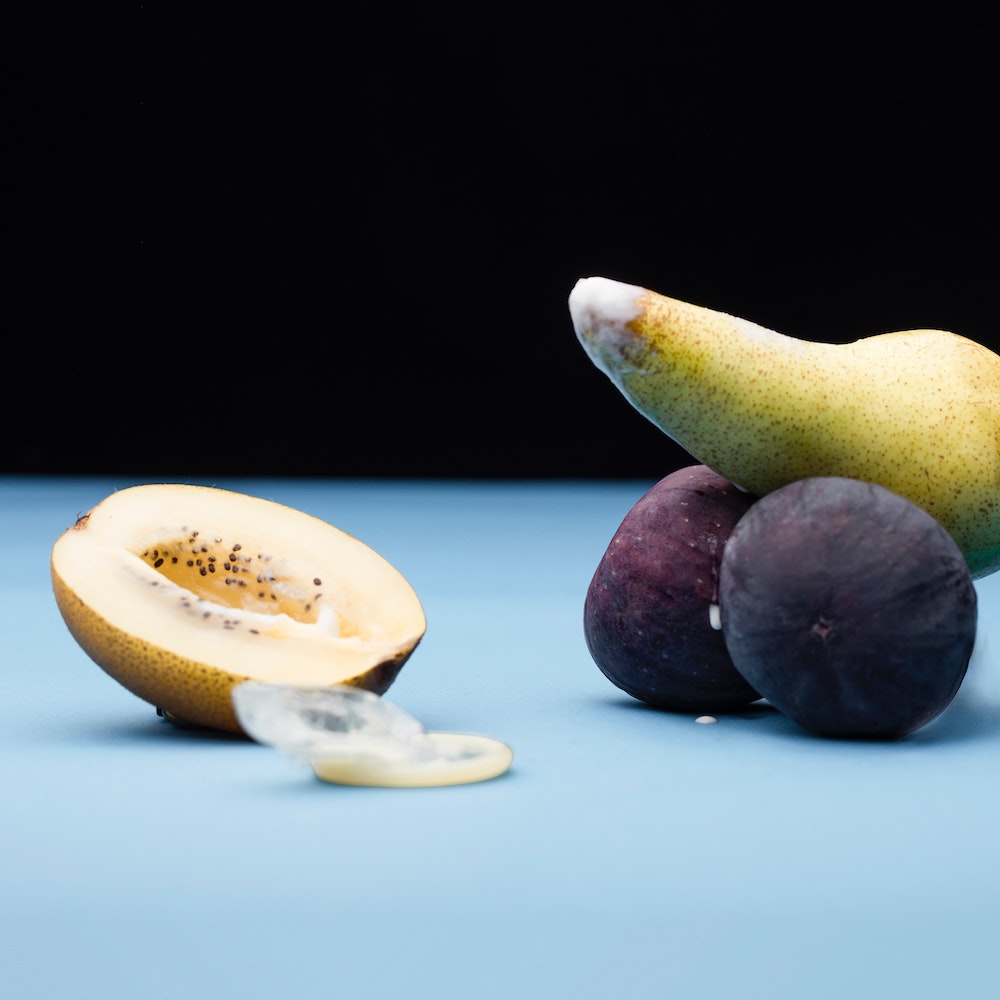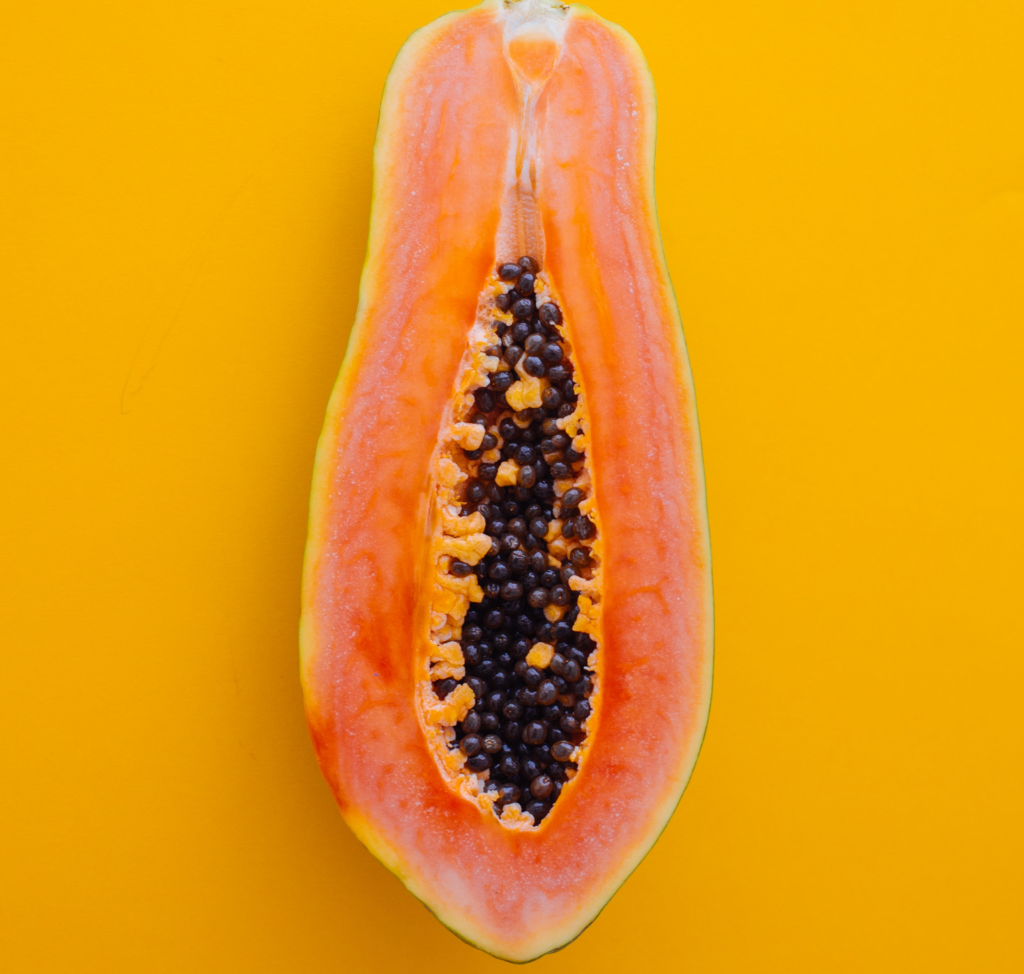BLOG
BREAST CANCER
ONLINE CONSULTATION
If you need a more personal approach I’m just a phone call away.
Meet Sally!
In this video Sally will give you an introduction to the blog about breast cancer.
Common signs of breast cancer
Estrogens role in breast cancer
Meet the liver estrogens
Making hydroxy liver estrogens water soluble
Did you know …
- Breast cancer occurs when abnormal cells in the breast grow in an uncontrolled manner forming tumours.
- It can occur in both men and women, but women are at greater risk due to their breast development and lifelong exposure to oestrogens.
- Breast cancer can be confined to the breast but can also spread to other cells in the body.
- Breast cancer occurs more frequently in the left breast than the right.
- The left breast is 5%-10% more likely to develop cancer than the right breast and no one knows why!
- In general there is a long period between breast cell changes and feeling a ‘lump’
- How long depends how quickly the cells divide and multiply.
- In a younger person the cells divide must quicker and therefore the cancer is said to be more aggressive
- With most breast cancers, each division takes one to two months, so by the time you can feel a cancerous lump, the cancer has been in your body for two to five years
- Today it is generally considered that DNA plays a central role in the development of all cancers, including breast cancer.
- The theory is:
– All cells in the body contain DNA which provides instructions for cell growth, activity and division.
– When a cell divides its DNA is copied precisely, but occasionally a mistake known as a “mutation” occurs which is passed on to the new cell
– Over time mutations accumulate and their combined effects can lead to cancer cells.
– The more often a cell divides the greater the risk of mutations occurring and accumulating.
BUT..
- More and more data is appearing suggesting cancer is more a metabolic disease, ie how the cells make energy
- Which makes sense considering cancer rates in general have increased the last 50 years – BUT our DNA has not radically changed during that time. On the other hand our diet and lifestyle has, which radically effects the body’s metabolism
- And yet cancer is still not fully understood.
- A variety of risk factors come together to make you more, or less, susceptible.
- Some of these risk factors are inherited, some are incurred throughout your life and others are present in the environment in which you live.
- Many believe that naturally occurring Estrogens can influence the risk of developing breast cancer, mainly because of their ability to increase rates of cell division and promote the growth of Estrogen-responsive tumours.
- BUT..
– most breast cancer is seen in women over 60 when naturally occurring Estrogen levels are very low
– not all women get breast cancer even though all women produce Estrogen
– most breast cancer in younger women with copious amounts of Estrogen is driven by genetic mutations that are not affected by Estrogen
– some men get breast cancer
– so obviously Estrogen is not the solo culprit
- It appears that modern-day living is increasing our risk of getting breast cancer as those born in earlier generations or in less developed regions/countries had/have a lower risk of developing breast cancer.
Diagnosing Cancer
- Cancer is already the leading cause of death in Canada, the UK, Australia, New Zealand, and Denmark.
- In the US it is projected that cancer will surpass heart disease as the nation’s leading killer by 2030.
- Since 1971, global spending on cancer research has exceeded $200 billion
- 5-year cancer survival rates have improved from 48.9% in 1975 to 68.7% in 2015 US statistic
- However, most of these improvements in survival have been attributed to improved screening and better detection techniques rather than improved treatment.
- Screening allows cancer to be detected at its earliest stages where intervention is most effective.
- Survival rates for most forms of metastatic or late stage (stage 3 or 4) disease have remained largely unchanged for the past 40 years
- In contrast death rates from stroke and heart disease have dropped by 70% over the same period
- Why has progress been so slow – The short answer is that cancer is a very complex disease.
- Decades of detailed genetic analysis have revealed that there are nearly 1000 known cancer-associated genes in humans (~ 250 oncogenes, ~ 700 tumour suppressors).
- Given that cells typically need 2 or more mutations in these cancer-associated genes to become carcinogenic, simple mathematics indicates that there could be > 1 million different cancer genotypes.
- How can anyone hope to treat a million different diseases?
- Recent genetic data is even more discouraging.
- Using genetic fingerprinting of tumours in order to design custom, tumour-specific drugs appears to be a daunting challenge.
- However, a glimmer of hope is now on the horizon.
- Detailed analysis of the function of most oncogenes and tumour suppressors suggested that many play a key role in cellular metabolism aka production of energy
- Suggesting that cancer is essentially a metabolic disease
- Indeed prior to 1970, most cancer researchers thought of cancer as a metabolic disorder.
- In 1927 Otto Warburg noticed that cancer cells consumed up to 200 × more glucose than normal cells (the “Warburg effect”).
- However, with Warburg’s death in 1970 and the discovery of oncogenes in 1971, most cancer researchers shifted their thinking to view cancer as a genetic disease rather than a metabolic disease.
- The “re-discovery” of cancer as a metabolic disorder largely occurred in the last five years.
- Mostly due to the increased accessibility of measuring metabolites and the discovery of “oncometabolites”.
- Oncometabolites accumulation initiates or sustains tumour growth and metastasis.
- The first oncometabolite to be discovered was 2-hydroxyglutarate which alters histone methylation patterns – the way genes are turned off and on
- Others have since been found
– fumarate (renal cell carcinoma)
– succinate (paraganglioma)
– sarcosine (prostate cancer)
– glycine (breast cancer)
– glucose (most cancers)
– glutamine (myc-dependent cancers)
– serine (most cancers)
– asparagine (leukemia)
– choline (prostate, brain, breast cancer),
– lactate (most cancers)
– polyamines (most cancers).
- Almost all of these oncometabolites arise from, or are needed for, energy production and mitochondrial function aerobic glycolysis, glutaminolysis or one-carbon metabolism.
- What does this mean for cancer diagnosis and treatment?
1. It suggests that early stage cancer may be detectable by looking for simple metabolic changes such as increased levels of acetate, lactate, serine, sarcosine, asparagine, dimethylspermine, betaine or choline in blood, saliva, breath or urine.
- Metabolites in colonic polyps may detect early stage pancreatic cancer
- Given that more than 95% of cancers cannot be detected via genetic screening, metabolite screening could be a fast, cost-efficient way of identifying early stage cancers or pre-cancers.
- Remember early cancer detection is still the best route to ensure optimal treatment outcomes.
2. It is relatively easy to develop or repurpose existing drugs for the well-studied metabolic enzymes.
- Some existing drugs are already showing impressive results as anticancer therapies, including
– metformin (a diabetic biguanide that inhibits hexokinase II),
– dichloroacetate (a lactic acidosis drug that inhibits pyruvate dehydrogenase kinase),
– ritonavir (an antiviral drug that also inhibits glucose transporters)
– orlistat (an anti-obesity drug that blocks fatty acid synthase).
- Likewise diets or medical foods that significantly reduce the amount of glucose (ketogenic diets)
- As with all new discoveries and emerging fields, the excitement over metabolism and cancer needs to be tempered with some caution.
- However, the bottom line is that while cancer as a genetic disease looks to be impossibly complex, cancer as a metabolic disease appears to be remarkably simple. READ MORE
Cancer Development 101
2 areas of thought
1. It’s a genetic disease
– oxidative stress increases DNA damage and mutations changing the way cells
2. It’s a metabolic disease
– changes in the way the cell makes energy
- Menopause itself doesn’t increase the risk of cancer.
- Cancers are more common as people age
- Most cancers occur in people age 55 +
- With aging, the incidence of all cancers is expected to increase.
- For women, the most important cancers are lung, colon, breast, endometrial / uterine, and ovarian cancer.
- In the developing world cervical cancer is a major cause of death in women.
Probable Solutions
- Stop smoking
- Reduce alcohol
- Regular Exercise
- Maintain optimal blood sugar control
- De-stress
- Respect Cortisol’ Circadian rhythm
- Support Liver detoxification pathways
- Support Glutathione and other antioxidants, like Melatonin.
Types of Breast Cancer
- Breast cancer is a diverse group of diseases.
- It may be invasive or non-invasive.
Most common types of invasive breast cancer
Invasive breast cancer of no special type (NST)
- Formally known as invasive ductal carcinoma, where cancer cells have grown through the lining of the milk ducts into surrounding breast tissue.
- It is called NST as when cells are viewed under a microscope, they have no special features.
- Is the most common form of breast cancer, accounting for 80% of all breast cancer diagnoses.
- Starts in the milk ducts of the breast and moves into nearby tissue.
- In time, IDC may spread (metastasize) through the lymph nodes or bloodstream to other areas of the body
Invasive lobular breast cancer
- Cancer cells in the lobules (milk-producing glands) have spread into surrounding breast tissue.
- It accounts for around 15% of all invasive breast cancers.
Inflammatory breast cancer
- A rare, fast-growing type of breast cancer caused by breast cancer cells blocking the small lymph channels in the breast and skin.
- In this type of breast cancer, the skin of the breast looks red and inflamed.
- It accounts for around 1-5% of invasive breast cancers.
Paget’s disease of the breast
- A rare type of breast cancer that causes change to the skin of the nipple, similar to eczema.
Hormone receptor-positive cancers
- Describes cells that have receptor proteins (think keyholes) that bind to a specific hormone.
- For example, some breast cancer cells have receptors for the hormones estrogen or progesterone and may produce additional oestrogen receptors
- These cells are hormone receptor positive and they need estrogen or progesterone to grow.
- Knowing if the cancer is hormone receptor positive may help plan treatment.
- Around 75% of breast cancers are oestrogen receptor-positive (ER+)
- About 60% of these are also progesterone receptor positive (PR+)
- The role of the PR is still not clear some studies suggest it has a controlling effect
- If the receptors are not found the cancer is called ER-negative or PR-negative
HER2 receptor positive breast cancer
- HER2 – human epithelial growth factor 2 proteins are receptors on breast cells.
- Normally, HER2 receptors help control how a healthy breast cell grows, divides, and repairs itself.
- But in about 10% to 20% of breast cancers, the HER2 gene doesn’t work correctly and makes too many copies of itself known as HER2 gene amplification
Triple-negative breast cancer
- Does not have additional receptors for oestrogen, progesterone or HER2.
- 15% of all breast cancers – over 8,000 cases a year in the UK – are triple negative.
- More common in
- women who have inherited a BRCA gene – particularly BRCA1
- black women
- women who have not yet reached the menopause
- women under 40.
Non-invasive breast cancer
- An early form of breast cancer, which remains localised to the breast.
- The most common form is ductal carcinoma in situ (DCIS)
- If left untreated DCIS may become invasive.
- Another common type of non-invasive breast cancer is lobular carcinoma in situ (LCIS).
- This type of carcinoma is not cancerous (so does not spread), although its presence is correlated with an increased chance of developing cancer at a later stage.
Diagnosing
- Tissue from a biopsy or after surgery will be tested for the various receptors and proteins.
Stages of Breast Cancer
T zero / 0
– There is no evidence of cancer in the breast.
Tumour in Situ / Tis
– The cancer is confined within the ducts of the breast tissue and has not spread into the surrounding tissue of the breast. There are 2 types of breast carcinoma in situ:
DCIS
– is a non-invasive cancer, but if not removed, it may develop into an invasive breast cancer later. DCIS means that cancer cells have been found in breast ducts and have not spread past the layer of tissue where they began.
Paget’s disease
– of the nipple is a rare form of early, non-invasive cancer that is only in the skin cells of the nipple. Sometimes Paget’s disease is associated with an invasive breast cancer. If there is an invasive breast cancer, it is classified according to the stage of the invasive tumour.
T1
– The tumour in the breast is 20mm or smaller in size at its widest area. This is a little less than an inch.
T2
– The tumour is larger than 20 mm but not larger than 50 mm.
T3
– The tumour is larger than 50 mm.
T4
– The tumour falls into 1 of the following groups:
T4a – the tumour has grown into the chest wall.
T4b – the tumour has grown into the skin.
T4c – the cancer has grown into the chest wall and the skin.
T4d – inflammatory breast cancer.
Common Signs of Breast Cancer
- A lump or swelling in the breast, upper chest or armpit.
- You might feel the lump, but not see it.
- Changes in the size or shape of the breast
- A change in skin texture i.e. puckering or dimpling of the skin
- A change in the colour of the breast – the breast may look red or inflamed
- Rash, crusting or changes to the nipple
- Any unusual discharge from either nipple.
Treating Breast Cancer
- Breast cancer can be treated in several ways.
- The treatment will depend on the type of breast cancer and how far it has spread.
- Often a combination of various treatments.
Types
- Surgery – cutting out the cancerous tissue, maybe breast removal.
- Chemotherapy – to shrink or kill the cancer cells via pills or intravenous, or both – generally has a larger benefit for Triple negative breast cancer compared to ER positive breast cancer
- Hormonal therapy – blocks cancer cells from getting the hormones they need to grow.
- HER2-targeted therapies
- Anti-HER2 medicines attach to the HER2 receptor proteins blocking for growth signals
- NB! anti-hormone therapy and HER2 targeted therapies are of no benefit to people with Triple negative breast cancer
- Biological therapy – working with your body’s immune system to help it fight cancer cells or to control side effects from other cancer treatments
- Radiation therapy – high-energy rays (similar to X-rays) to kill the cancer cells.
Reducing your Risk of Breast Cancer
Research shows that lifestyle changes can decrease the risk of breast cancer, even in women at high risk.
Risk factors under your control
- Stop smoking
- Limit alcohol – the more alcohol you drink, the greater your risk of developing breast cancer.
- Maintain a healthy weight – If your weight is healthy, work to maintain that weight. If you need to lose weight, ask your doctor about healthy strategies to accomplish this. Reduce the number of calories you eat each day and slowly increase the amount of exercise.
- Be physically active
- De-stress
- Increase Vit D
- Increase Melatonin
- Low after circadian rhythm
- Support liver detoxification
- Breast-feed – may play a role in breast cancer prevention. The longer you breast-feed, the greater the protective effect.
- Limit postmenopausal hormone therapy – combination hormone therapy may increase the risk of breast cancer.
- Birth control – there’s some evidence that hormonal contraception increases the risk of breast cancer in 1 out of 7690 women after 1 years use, which decreases after you stop using hormonal contraceptives. But hormonal contraception can have many positives such as controlling menstrual bleeding, preventing an unwanted pregnancy, and reducing the risk of endometrial and ovarian cancers
Risk factors outside your control
- Being a woman – 99% of new cases of breast cancer are in women.
- Getting older – 80% of breast cancers occur in women over the age of 50.
- Most men who get breast cancer are over 60.
- A family history of breast cancer – if you have a family history of breast cancer, you and some other members of your family may have a higher than average risk of developing the disease.
Breast Cancer and Estrogen Replacement Therapy
- Over and over studies of estrogen and breast cancer show small, weak, contradictory or non-existent links, yet scientists still try to find something, somewhere in the data that supports their beliefs – why?
- Many of these studies fail to meet the universally accepted Austin Bradford criteria created in 1965 by biostatistician Austin Bradford, to help scientists determine whether there is causal relationship between the proposed agent in this case Estrogen and the specific disease or state, in this case breast cancer
- NB! Every medical drug has side effects, some quite considerable yet this doesn’t stop the medical world recommending and prescribing these drugs.
Estrogen’s Role in Breast Cancer
There are 2 ways that Estrogen can be involved in breast cancer:
- Liver detoxification pathways through cytochrome P450-1B1-and the activation of the 4-OH Estrogens
- Stimulation of tumour cell proliferation through receptor-mediated hormonal activity
- Estrogen can create DNA mutations and feed tumour cells
The statistics – according to Cancer UK
- 5 – 2 % of breast cancer cases in the UK are linked to use of HRT.
- 9 % of breast cancer cases are linked to obesity
- 8 % of breast cancer cases are linked to alcohol consumption (more than 1 unit per day)
- 8% of breast cancer cases are linked to smoking
- 5 % of breast cancer cases are linked to physical inactivity
So why is all the focus on how HRT increases the risk for breast cancer when it is crystal clear that, changing any of the above lifestyle habits will radically decrease your risk for breast cancer?
Other important facts about breast cancer you should consider
Fact
- 5% of UK women get breast cancer
Question
- All women have breasts and we all produce Estrogen, so why don’t all women get breast cancer?
Fact
- Developing breast cancer is greatest in women over 60
Question
- How can that be, Estrogen levels are much less in women 60+, so why is the risk increased?
Answers
- It’s not Estrone/E1, Estradiol/E2 or Estriol/E3 that instigate the cancer it’s the hydroxy-Estrogens produced in the liver which create the DNA mutations that instigate the cancer process.
- Metabolism changes with the drop in Estrogen, cells become more resistant to Insulin which increases the risk for metabolic changes in the way the cell makes energy, now thought to be the cause of cancer development
Solutions
- Look after your liver
- Increase the production of the 2-OH Estrogens with
– Resveratrol
– DIM
– Quercetin
- Optimise making the fat soluble hydroxy-Estrogens water soluble with
– Glutathione
– Methyl
– Sulphur
– Glucuronic acid
– Acetyl
- Optimise blood sugar and insulin with
– TRE
– Lower carb intake
- Reduce cortisol with
– Reduce stress
– Focus on Cortisol’s Circadian rhythm.
Estrogen Receptors
- Estrogen receptor alpha (ERα)
- Estrogen receptor beta (ERβ)
- Belong to a superfamily of nuclear receptors called steroid hormone receptors, which activate or repress the transcription of a large number of genes, thus modulating critical physiologic processes.
- ERα speeds up activity
- ERβ puts on the brake
- ERβ is a nuclear receptor with broad-spectrum tumour suppressor activity
- Which could serve as a potential treatment target in a variety of human cancers including breast cancer
- High ERβ1 expression is associated with improved overall survival in women with breast cancer.
- ERα binds predominantly Estrone and Estradiol
- ERβ binds predominantly Estriol.
The Hydroxy Liver Estrogens
Are the 6 hormones produced in the liver during the first phase of the processes that make the fat-soluble hormones Estrone / E1 and Estradiol / E2 water soluble ready for excretion through the stools and urine.
- 2-OH-E1 – the hydroxy version of Estrone is shown to be less cancerogenic, if at all
- 2-OH-E2 – the hydroxy version of Estradiol is shown to be less cancerogenic, if at all
- 4-OH-E1 – the hydroxy version of Estrone is shown to increases the risk for DNA mutations and thereby the risk of cancer
- 4-OH-E2 – the hydroxy version of Estradiol is shown to increases the risk for DNA mutations and thereby the risk of cancer
- 16-OH-E1 – the hydroxy version of Estrone can increase proliferation of breast tissue, which can cause an increase in size and tenderness and proliferation of the endometrium creating heavier bleeds
- 16-OH-E2 – is the hydroxy version of Estradiol, which is Estriol / E3, the quiet Estrogen
The 16 hydroxy Estrogens can NEVER become a 2 or a 4 hydroxy and therefore do not create DNA mutations / cancer
The hydroxy-Estrogens are still ‘Estrogens’, are still fat soluble and need to be made water soluble to be excreted, if not they come back into circulation working as an Estrogen.
Making Hydroxy Liver Estrogens water soluble
In phase 2 of Estrogen detoxification the liver adds nutrients to the hydroxy-Estrogens which makes them water soluble. The process is called conjugation.
All of the following molecules are produced in the body, but can be supported through supplementation and / or foods for extra support for the aging or burdened liver.
Glutathione
- An important antioxidant
- Support through supplements:
Glutathioine
BUY HERE
NAC
BUY HERE
Sulforphane
BUY HERE
VIT. C
BUY HERE
Sulphur
- From foods
– Eggs
– Cabbage family
– Garlic and onion
Asparagus
- Support through supplements
– Glucosamine sulphate – BUY HERE
Glucuronic acid
- From foods
– Jerusalem Artichokes
Amino acids
- Glutamine, glycine, taurine and cysteine
- From food proteins
- From protein powders – BUY HERE
Acetyl
- From vinegar
Methyl
- From organ meats
- From supplements
– B12 – BUY HERE
– TMG – BUY HERE
Which Hydroxy Liver Estrogens do you make?
Knowing which hydroxy-Estrogens you make is important
- In principle your DNA dictates and you can test yours here – BUY HERE
- But so do your lifestyle choices:
– Chronic inflammation increases production of the 4-hydroxy
– Alcohol decreases the 2-hydroxy and increases the 16-hydroxy
– Smoking increases all the hydroxy’s
– BBQ increases all the hydroxy’s
– Environmental toxins, such as PAH’s PBA, phthalates, increases all the hydroxy’s
- Get a picture of which pathway you favour – BUY HERE
Supplements that support production of the 2 hydroxy-Estrogens
Breast Cancer in Men
- Breast cancer is often thought of as something that only affects women, but men can get it in rare cases.
- It grows in the small amount of breast tissue men have behind their nipples.
- It usually happens in men over 60, but can very occasionally affect younger men.
Symptoms
- A lump in the breast – this is usually hard, painless and does not move around within the breast.
- The nipple turning inwards.
- Fluid oozing from the nipple (nipple discharge), which may be streaked with blood.
- A sore or rash around the nipple that does not go away
- The nipple or surrounding skin becoming hard, red or swollen
- Small bumps in the armpit aka swollen glands.
Life and Death Statistics of Breast Cancer – Cancer Research UK – Survival
- Almost nine in ten (85%) of women survive breast cancer for five years or more.
- Breast cancer survival is improving and has doubled in the past 40 years in the UK due to a combination of improvements in treatment and care, earlier detection through screening and a focus on targets, including faster diagnosis.
- An estimated 600,000 people are alive in the UK after a diagnosis of breast cancer. This is predicted to rise to 1.2 million in 2030.
- For many the overwhelming emotional and physical effects of the disease can be long-lasting.
Death
- Every year around 11,500 women and 85 men die from breast cancer in the UK – that’s nearly 1,000 deaths each month, 31 each day or one every 45 minutes.
- Breast cancer is the fourth most common cause of cancer death in the UK.
- Breast cancer is a leading cause of death in women under 50 in the UK.
- Lung cancer is by far the most common cause of cancer death in the UK, accounting for approx. 21% of all cancer deaths in females and males combined – statistics from 2017-2019
- The next most common causes of cancer death in UK people are
– bowel (10%)
– prostate (7%)
– breast (7%)
- Though there are more than 200 types of cancer, these 4 types – lung, bowel, prostate and breast – together account for 45% of all cancer deaths in the UK – 2017-2019.
WANT MORE?
CHECK OUT THE OTHER BLOGS ABOUT BREAST CANCER
ONLINE CONSULTATION
If you need a more personal approach I’m just a phone call away.
Questions? Please don't hesitate to contact me








